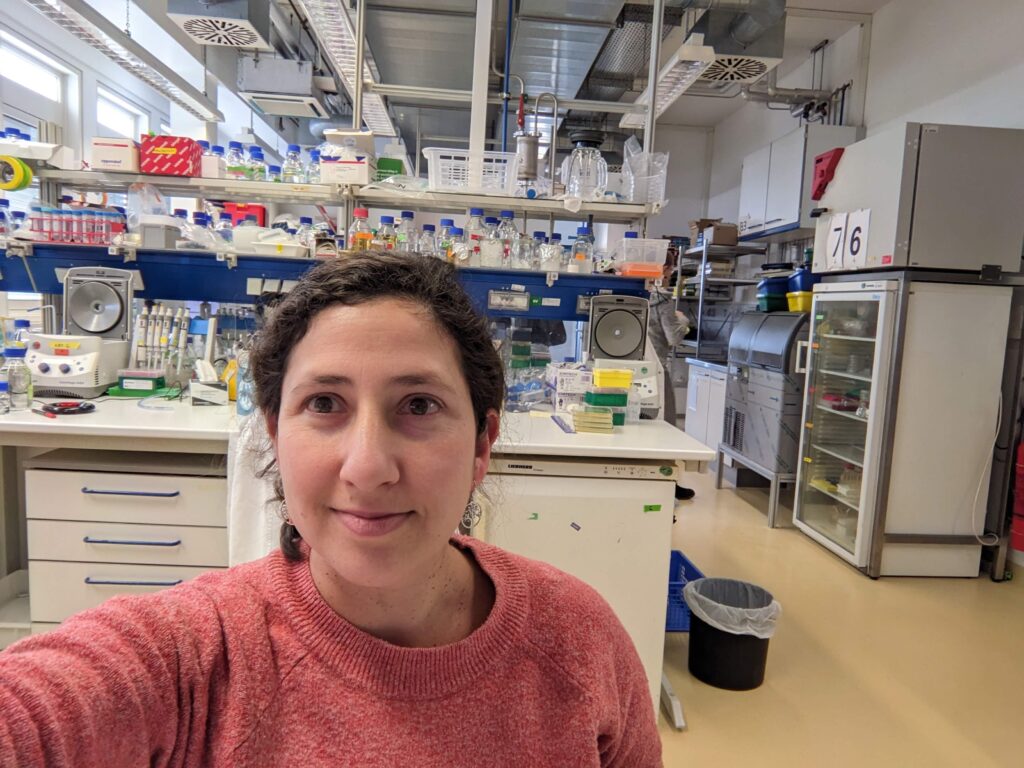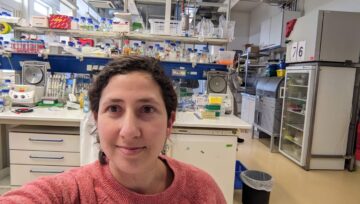SPOTLIGHT ON RESEARCH
PAPER OF THE MONTH July 22
The Committee for Graduate Studies in the Faculty of Biology selects the leading scientific article each month from all the scientific articles published for that month.
We are pleased to announce that the winner of January’s article is Dr. Sheila Roitman from Prof. Beja’s lab. The article was published in Nature Microbiology.
On the occasion of the win, we asked Sheila to provide us with some interesting details about the study, the path that led to the research, and a bit about her.
Hi, could you introduce yourself in a few words?
I’m Sheila Roitman, I was born in Buenos Aires, Argentina, and made Aliyah at the age of sixteen with the Naal’e Project of the Jewish Agency. I did my Bachelor’s at the Hebrew University and my master’s and PhD in Prof. Beja lab in the Technion.
Could you explain what Prof. Beja Laboratory is all about?
The Beja lab search for hidden treasures in the genomes of marine microorganisms. We collect water and investigate what can these microbes do, especially regarding light sensing. Are these microbes capable of using light and convert it to energy? Can viruses sense light?
Could you tell us about your current article/research what was the main purpose of the research and what did you discover?
I started by studying how viruses can sense light and for what purpose. I had a giant virus who could theoretically sense light, that infects an algae, who could definitely sense light and creates energy using light energy. It was a very frustrating project, the viral light-sensing proteins were nowhere to be found. So I went deeper into the system and found that there was a third-player in my samples, a hitchhiker who was hidden there for years, a small virus that we called Gezel. Gezel is not a regular virus, it cannot infect its host alone, it rather joins the infection of the giant virus and takes advantage of it. That is why Gezel is a “virophage” it is a virus infecting another virus.
Can you elaborate on the importance of the discovery? How will it serve you and what directions does it take? What is the application of the discovery (domains, solutions)?
“Virophages” is a term used to describe viruses that infect other viruses, a kind of “super-parasite”. To this day, three species of virophages were known, that belong to the same family. Gezel is not related to them, meaning that hyper-parasitism has evolved at least two times independently. Additionally, Gezel-like DNA was found hidden in the algal DNA, meaning that it could propagate using the alga directly. Because of this dual life-style (as a free virus and living inside the algal DNA), and its unique features, Gezel might bring us closer to understand where do viruses come from.
What drew you to the current lab/project?
The Beja lab is a great place to do good curiosity-driven science. Prof. Beja is a supporting mentor and enabled me to pursue this project that was outside the scope of the main research in the lab.
When you are not “doing” science, what do you do?
Generally I like to travel, read and scuba dive. But nowadays, I mainly enjoy spending time with my girls.
When you grow up who do you want to be?
My mom says I am already grown up, so whatever I want to be, I ‘d rather be it now.
what are your plans for the future of your career?
I am currently a post-doctoral researcher at the Max Planck Institute for Biology in Tuebingen, Germany. I followed the course of evolution and changed my research focus to microbes inhabiting land plants.
A link to the full article: https://www.nature.com/articles/s41564-022-01305-7
A link to the Beja lab site: https://beja.net.technion.ac.il/
To Prof. Beja page: https://biology.technion.ac.il/member/%d7%91%d7%96%d7%b3%d7%94/









